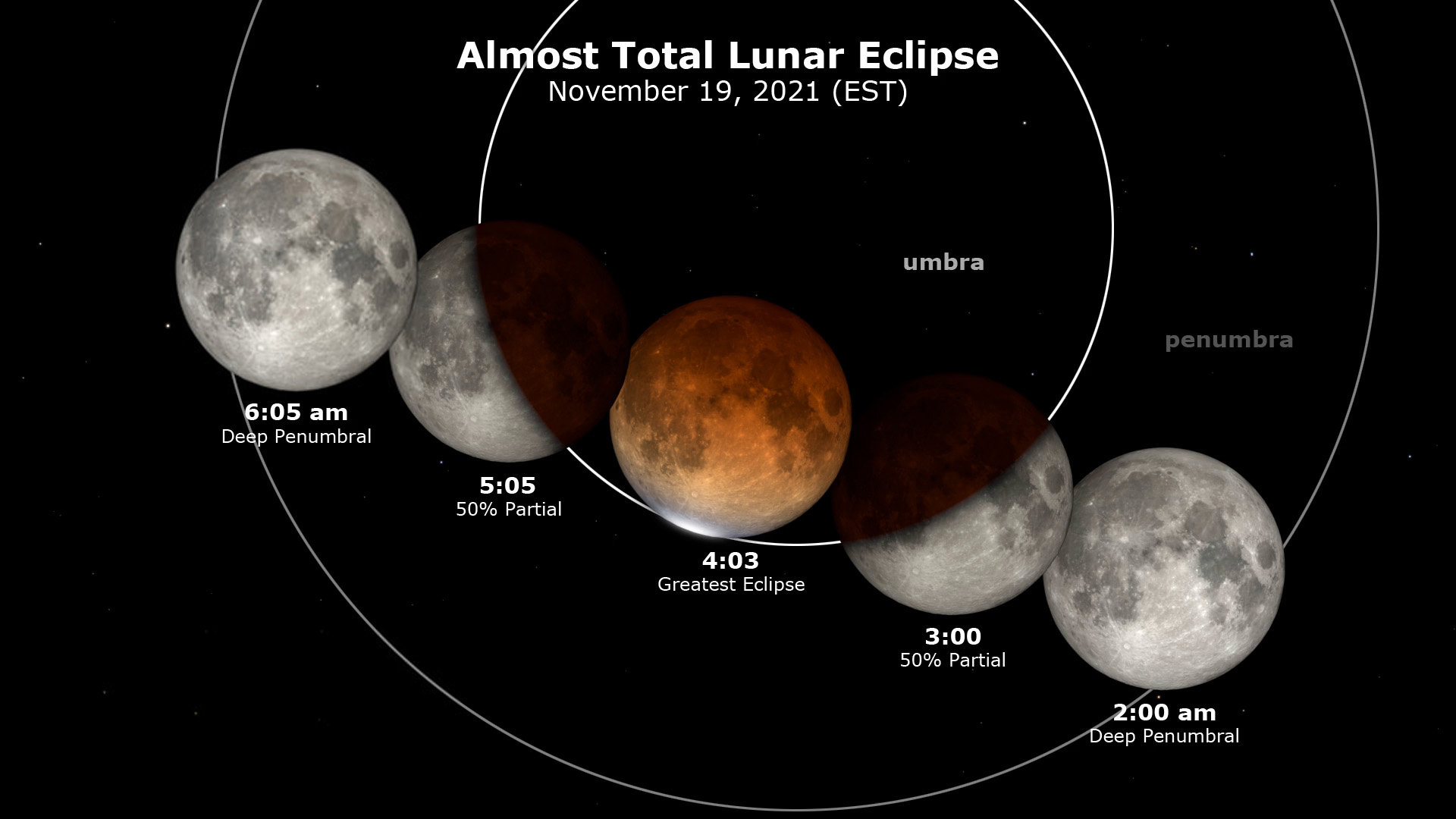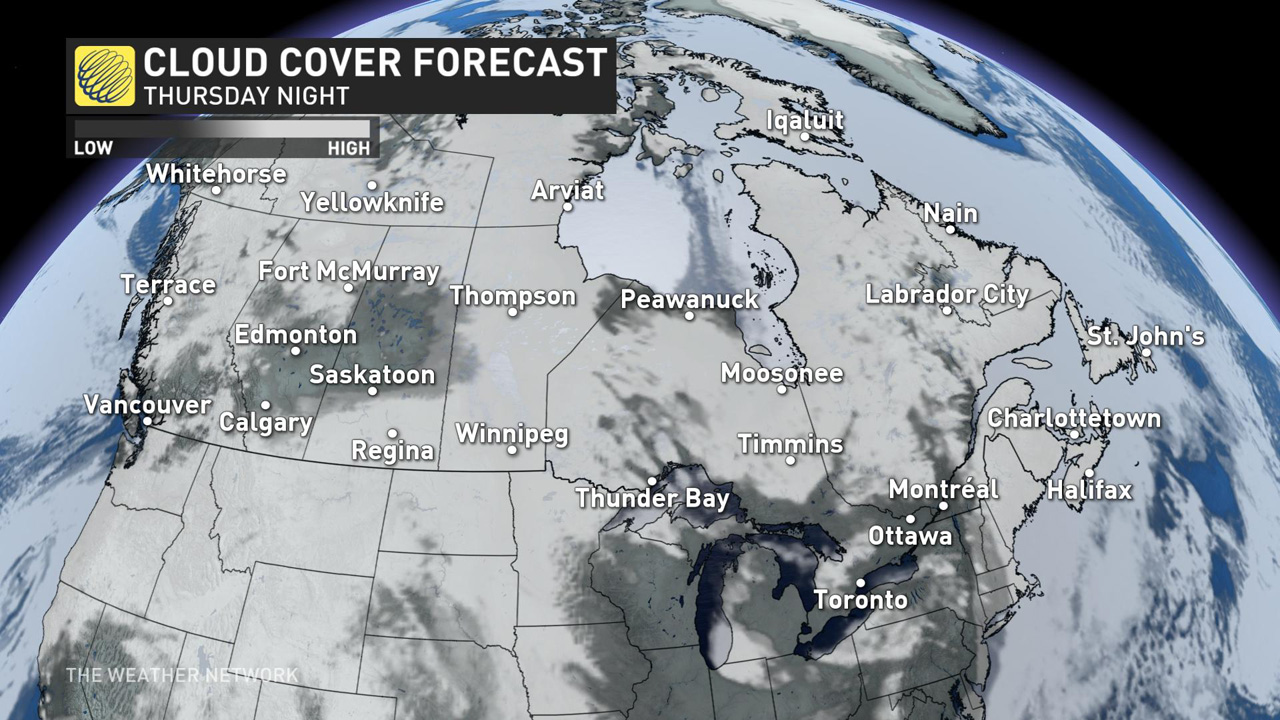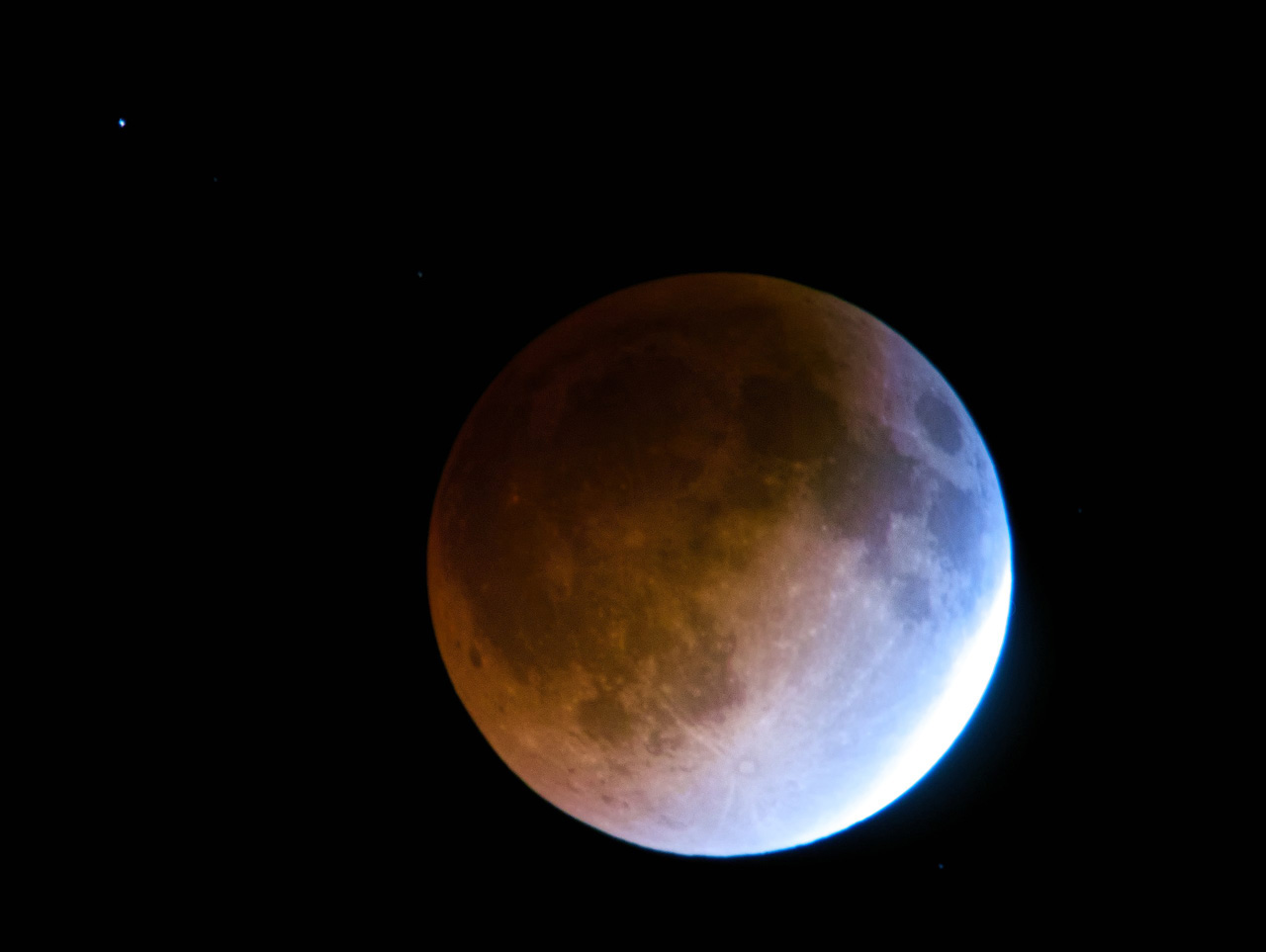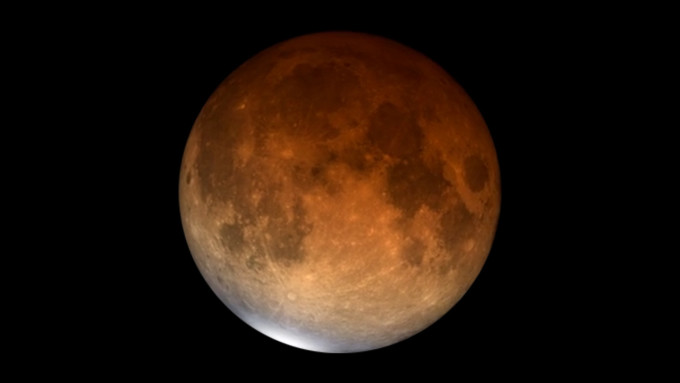Ultra-rare partial lunar eclipse will shine across Canada tonight
Hope for cear skies on Thursday night because we are in for a super-rare treat! The Full Moon will be passing through Earth's shadow, resulting in a partial lunar eclipse unlike anything seen in hundreds of years.
Starting at just after 1 a.m. EST on Friday morning — 2:30 a.m. NST/10 p.m. PST, Thursday night — the Sun, the Earth, and the Moon will be aligning just right to produce a lunar eclipse. Unlike the Super Blood Flower Moon from earlier this year, the Moon will not turn completely red during this event. Instead, we will see a partial lunar eclipse, where the Moon only mostly dips into the dark red 'umbra' of Earth's shadow.
Don't let that deter you from getting out to see this, though, because it's going to be pretty special!
The Moon's path through Earth's shadow on Thursday night/Friday morning will plunge nearly all of it into the umbra. At the moment of greatest eclipse, about 3 hours after the event begins, only a tiny sliver of the Moon's south polar region will remain in the penumbra.

This graphic shows the path of the Moon through Earth's shadow on the night of Thursday, November 18 through Friday, November 19. The times referenced in the graphic are in Eastern Standard Time. Credit: NASA SVS/Scott Sutherland
So, this will be about as close to a total lunar eclipse as you can get, without it actually being a total lunar eclipse!
WHEN DO WE WATCH?
The timing of this "almost total" lunar eclipse makes it visible to everyone across the country (weather permitting
Because the eclipse happens simultaneously for everyone, though, we need to take time zones into consideration during the event. Thus, the challenging part will be that the farther east you are, the later you need to stay awake or the earlier you need to get up to see it.

The visibility of the November 18-19 lunar eclipse includes all of Canada. Only parts of eastern Canada will miss the end of the penumbral eclipse as the Sun rises in the morning. Credit: NASA's Scientific Visualization Studio
Listed below are the eclipse times for each time zone across Canada, starting with the entire duration of the eclipse, then that of the partial eclipse, and the time of greatest eclipse.
- NST — 2:32 a.m.-8:33 a.m.; Partial 3:48 a.m.-7:17 a.m.; Greatest 5:33 a.m.
- AST — 2:02 a.m.-8:03 a.m.; Partial 3:18 a.m.-6:47 a.m.; Greatest 5:03 a.m.
- EST — 1:02 a.m.-7:03 a.m.; Partial 2:18 a.m.-5:47 am; Greatest 4:03 a.m.
- CST — 2:02 a.m.-6:03 a.m.; Partial 1:18 a.m.-4:47 a.m.; Greatest 3:03 a.m.
- MST — 11:02 p.m.-5:03 a.m.; Partial 12:18 a.m.-3:47 am; Greatest 2:03 a.m.
- PST — 10:02 p.m.-4:03 a.m.; Partial 11:18 p.m.-2:47 a.m.; Greatest 1:03 a.m.
The entire eclipse lasts for 6 hours and 1 minute, from beginning to end. For the first hour and 15 minutes or so, it may be difficult to notice the effects as the Moon enters the faint penumbra. After that, though, the partial phase of the eclipse begins. This is the good part, when the dark umbra begins to creep across the face of the Moon!
You may not notice the reddish tinge for the first while, as your eyes struggle with the contrast between the dark lunar surface in the umbra and the brighter part that's still in the penumbra. The colour will become more apparent as time passes, though, and closer to the point of greatest eclipse, we may be treated to a fantastic sight.
As for the weather, here are the cloud conditions across Canada on Thursday night, as of the Tuesday morning forecast.

Come back for updates leading up to the event!
A SPLASH OF COLOUR
During a total lunar eclipse, when only a tiny portion of the Moon is peaking out of the umbra, close observers often notice bands of colour spread out across the Moon's face. This becomes even more noticeable through a telescope, a pair of binoculars, or through a camera using a telephoto lens
This array of colours is known as the Japanese Lantern Effect.

This photograph, taken from New Braunfels, Texas, during the April 15, 2014 total lunar eclipse, shows the Moon just before it was completely immersed in the umbra. Credit: Larry Johnson/Wikimedia Commons (CC by 2.0)
The term was apparently coined in the 1950s by astrophotographer Peter A. Leavens. It describes the stages of a total lunar eclipse that starts roughly five minutes before totality and again for approximately five minutes after totality ends.
The outer part of Earth's shadow (the penumbra) is usually portrayed as gray, and the inner part (the umbra) is shown as red. However, a much more subtle array of colours go into both. This is due to light filtering through the different layers of Earth's atmosphere. These subtle colours become more noticeable as more of the umbra darkens the Moon's surface.
While this effect is seen for only a short time during a total lunar eclipse, we may see it for close to an hour during Thursday's partial lunar eclipse!
LONGEST PARTIAL LUNAR ECLIPSE IN CENTURIES
At 3 hours, 28 minutes and 24 seconds long, Thursday night's partial lunar eclipse will be the longest seen this century.
For comparison, this century's shortest total lunar eclipse is on April 4, 2015, spent precisely 3 hours and 29 minutes passing through the umbra. The Moon was so close to the umbra's edge during that event that some observers who were closely watching with telescopes actually questioned if it genuinely qualified as a total lunar eclipse!

This simulated view of the Moon shows what the November 18-19 Partial Lunar Eclipse should look like at greatest eclipse. Credit: NASA SVS/Scott Sutherland
Thursday night's eclipse isn't just the longest partial lunar eclipse of this century, though. In fact, it's the longest eclipse seen in over five centuries past, and more than six centuries going forward!
According to NASA's records, the last "longest partial lunar eclipse" — at 3 hours, 28 minutes, and 48 seconds long — took place over 581 years ago, on February 18, 1440! For the next one, which will be an even 3 hours and 30 minutes long, there's an even longer wait! It occurs nearly 648 years from now, on February 8, 2669!
So, this is one not to be missed!
No comments:
Post a Comment